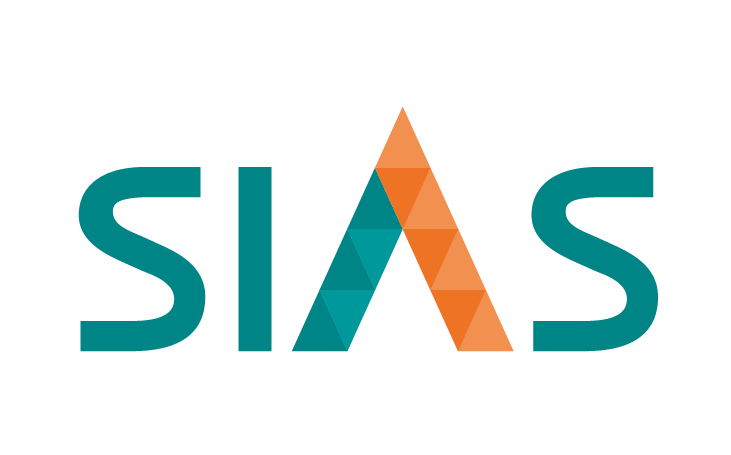Date: October 1, 2025

- The STI rose to a new all-time closing high of 4,355.82 on 11 Sep
- For the month, the gain was 0.7% at 4,300.16
- On Wall St, the Dow closed at new all-time high
- Singtel’s Optus woes, Wilmar’s corruption problems, Yangzijiang’s large orders, DBS’s all-time highs were among the main features
- Analysts are still positive on Singtel
- New IPOs in focus were Centurion’s REIT, Metaoptics and Avepoint
Plenty for investors to chew on
An interest rate cut by the US Federal Reserve, the unveiling of two new broad market indices by the Singapore Exchange and a new all-time high for the Straits Times Index above 4,300 – thanks mainly to a new all-time high for DBS – were the main features of September, though there were many company-specific developments for traders to bank on.
Among these were the problems faced by Singtel’s Australia subsidiary Optus, the listing of Centurion Accomodation REIT, Avepoint and Metaoptics, Yangzijiang coming into focus after announcing US$920m in new orders followed by news later of US$180m in cancellations, and Wilmar International’s conviction for corruption in Indonesia.
There was also an element of “buy in anticipation, sell on news’’ with the STI rising ahead of the 17 September US Federal Open Markets Committee meeting at which rates were lowered by the widely-expected 25 basis points, only to weaken in the two weeks afterwards.
After hitting a new all-time closing high of 4,355.82 on 11 Sep ahead of the Fed’s meeting, the STI finished the month at 4,300.16 for a net gain of 31 points or 0.7% for the month.
For the third quarter the index rose 336 points or 8.5% and for the year-to-date, it has risen 513 points or 13.5%.
On Wall St, the Dow closed Sep at new all-time high
On Tuesday, the Dow Jones Industrial Average rose 82 points, or 0.2%, to mark a record closing high of 46,397.89 whilst the S&P 500 was up 0.4% and the Nasdaq Composite rose 0.3%.
The S&P and Nasdaq each had their best September performance since 2010.
The yield on the 2-year Treasury note dropped to 3.6%, but the 10-year yield was up to 4.15%.
The market bucked historical trends by rallying to fresh highs earlier in month, riding another wave of artificial intelligence exuberance. The Federal Reserve also resumed cutting interest rates earlier this month, and traders see a 77.7% chance that rates will end the year another half-point lower, according to the CME FedWatch Tool.
DBS rose to an all-time high following analyst upgrades
JP Morgan upgraded DBS to “overweight” on Sept 9 with a target price of S$56, citing its “sector-high” dividend yield spread as the reason for its re-rating.
It had previously downgraded the bank in May to “neutral” with a target price of S$47, due to limited share upside forecast, as well as net interest margin compression hitting the banks at that time.
UOB Kay Hian also revised its target price for DBS to S$54.40, from $52.80 previously.
On 10 Sep, DBS hit its all-time closing high of S$52.73 before finishing the month at S$51.15.
Firm debuts for Centurion REIT, Avepoint and Metaoptics
Centurion Accommodation REIT’s listing on 25 Sep marked the first pure-play purpose-built worker and student accommodation REIT, providing access to two resilient segments within the living accommodation space across three markets globally.
At an initial market capitalisation of S$1.51 billion and funds raised of S$771.1 million, the REIT was the second-largest offering this year.
Based on the offer price of S$0.88 per unit, the REIT is expected to deliver an annualised distribution yield of 7.47% for FY2026 and 8.11% for FY2027.
The REIT closed at S$0.96 on its first day, a premium of 9.1% over its offer price and continued to push upward, finishing the month at S$1.04.
Earlier in the month, Nasdaq-listed cybersecurity firm AvePoint announced a secondary listing on SGX of 13.3 million shares to increase its financial flexibility and to create a market for its shares in Singapore.
Proceeds of the share sales went to the owners, including co-founder Jiang Tianyi, not the company.
AvePoint does not have a dividend policy as yet. Its international research and development hub has been located in Singapore since August 2022. The hub is expected to have about 500 local employees in total by 2026.
It debuted on SGX’s mainboard on 19 Sep and closed at S$19.70, 1% higher than its S$19.50 offer price, after 760,390 shares changed hands. They finished the month at S$19.50.
Semiconductor optics company MetaOptics also recorded a decent debut, its shares closing on 9 Sep at S$0.24 on Catalist, 20% higher than its S$0.20 offer price. Since then, the stock has continued to rise, closing the month at S$0.545.
CEO and executive chairman Mark Thng had said that his firm has “certain capabilities that the stock exchange and (others) are looking for” and believes MetaOptics is the only company in Singapore currently developing “single-layered glass lenses’’ termed “metalenses”.
Yanzijiang shot up after announcing big orders – but fell later after cancellations
At the start of the month, Yangzijiang Shipbuiling (YZJ) announced US920m in new orders, leading to a large jump in its share price. However, the new vessels are due for delivery between 2027 and 2029, and will not “have any significant impact on the earnings” for 2025, it said.
The new orders mean that Yangzijiang Shipbuilding has secured orders with an aggregate value of nearly US$1.5 billion in the year to date.
YZJ’s shares came under some pressure on Monday after news that three of its subsidiaries had cancelled contracts worth US$180m with an unknown party.
YZJ said the termination of the contracts was due to “certain critical information’’ concerning allegations that the buyer’s sole shareholder was involved in a scheme t circumvent US sanctions and regulations.
However, they rebounded on Tuesday, the last trading day of Sep to S$3.37. For the month, they posted a gain of S$0.46 or 15.8%.
Australian regulatory scrutiny shone unwelcome spotlight on Singtel; analysts remain positive
A series of network breakdowns by Singtel’s Australian subsidiary Optus has led to pressure on Singtel’s shares towards the latter part of the month.
The latest outage occurred on 28 Sep and affected triple zero calls to the police, fire department and ambulance services.
The issue, involving a mobile phone tower site in the Dapto area of New South Wales (NSW), affected around 4,500 customers and calls made between 3am and 12.20pm, including some emergency calls, the media reported.
In a Sept 29 statement, Singtel said one person who required emergency services was impacted, but this person was able to call emergency services from another phone successfully.
Singtel added that the outage experienced is a type that “carriers around the world routinely encounter” and “did not arise from any upgrade or maintenance action being conducted”.
It noted that the latest outage is “totally unrelated to last week’s triple zero incident. It is a different type of outage which was limited to one cell site out of 3,140 in NSW”.
Singtel was referring to an outage that took place across South Australia, Western Australia and parts of NSW on Sept 18 as a result of network upgrading.
Optus currently contributes around half of Singtel’s revenues.
While Optus’ credibility has taken a hit, analysts who cover Singtel are not sounding the alarm yet.
Mr Paul Chew, who heads research at Phillip Securities, said that in terms of operations, Optus is capable of recovering and has done so after larger disruptions in the past.
He said Optus’ rival Telstra has also been impacted by a triple zero outage. Australia’s largest telco on Sept 29 also reported a power outage that left some of its customers in Western Australia unable to make 000 calls for about 12 hours.
The 4G network failure was flagged by Telstra as an “unplanned service interruption”.
Meanwhile, most of Singtel’s other operations such as associate mobile services, information technology services and data centres remain on “a resilient growth trajectory”, Mr Chew said.
Phillip Securities is maintaining its recommendation to accumulate Singtel, with an unchanged target price of $4.86. Other brokerages like Maybank are also keeping their “buy” recommendations on the stock, although this will not come without risks.
After hitting an intra-month high of S$4.41 on 19 Sep, Singtel closed the month at S$4.13, for a nett loss of S$0.18 or 4.2% for Sep.
Subscribe to Newsletter
Subscribe to SIAS Mailing List and get updates to all upcoming events and news
By clicking submit, you agree to our privacy statement, collection, use and/or disclosure of your personal data to the extent necessary to provide you with this service.




